
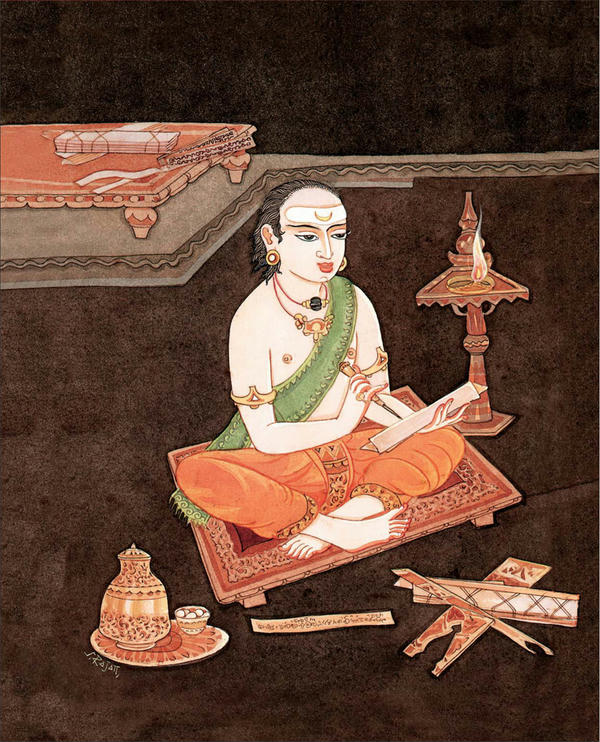
GLOSSARY
 aadheenam: ஆதீனம் Endowment, foundation, institution, establishment, estate, property. A Śaivite Hindu monastery and temple complex in the South Indian Śaiva Siddhānta tradition. Also known as maṭha or pīṭha, as in Kailāsa Pīṭha. The aadheenam head, or pontiff, is called the guru mahāsannidhānam or aadheenakarthar.§
aadheenam: ஆதீனம் Endowment, foundation, institution, establishment, estate, property. A Śaivite Hindu monastery and temple complex in the South Indian Śaiva Siddhānta tradition. Also known as maṭha or pīṭha, as in Kailāsa Pīṭha. The aadheenam head, or pontiff, is called the guru mahāsannidhānam or aadheenakarthar.§
abhisheka (abhishekam): अभिषेक “Sprinkling; ablution.” Ritual bathing of the Deity’s image with water, curd, milk, honey, ghee, rosewater, etc. A special form of pūjā prescribed by Āgamic injunction. Also performed in the inauguration of religious and political monarchs and other special blessings. See: pūjā.§
āchārya: आचार्य A highly respected teacher. The wise one who practices what he preaches. A title generally bestowed through dīkshā and ordination, such as in the Śivāchārya priest tradition. See: dīkshā.§
advaita: अद्वैत “Non-dual.” Nonduality or monism. The philosophical doctrine that Ultimate Reality consists of a one principle substance, or God. Opposite of dvaita, dualism. Advaita is the primary philosophical stance of the Vedic Upanishads, and of Hinduism, interpreted differently by the many ṛishis, gurus, paṇḍitas and philosophers. See: Vedānta. §
Āgama: आगम The tradition; that which has “come down.” An enormous collection of Sanskrit scriptures which, along with the Vedas, are revered as śruti (revealed scripture) . Dating is uncertain. They were part of an oral tradition of unknown antiquity which some experts consider as ancient as the earliest Vedas, 5000 to 6000 bce. The Āgamas are the primary source and authority for ritual, yoga and temple construction. Each of the major denominations—Śaivism, Vaishṇavism and Śāktism — has its unique Āgama texts. Smārtas recognize the Āgamas, but don’t necessarily adhere to them and rely mainly on the smṛiti texts. See: śruti. §
agni: अग्नि “Fire.” Either fire itself, or the God of the element fire, invoked through Vedic ritual known as yajña, agnikāraka, homa and havana. The God Agni is the divine messenger who receives prayers and oblations and conveys them to the heavenly spheres. See: yajña.§
ahiṁsā: अहिंसा “Noninjury,” nonviolence or nonhurtfulness. Refraining from causing harm to others, physically, mentally or emotionally. Ahiṁsā is the first and most important of the yamas (restraints). It is the cardinal virtue upon which all others depend. See: yama-niyama.§
ājñā chakra: आज्ञाचक्र “Command wheel.” The third-eye center. See: chakra.§
ākāśa: आकाश “Space.” The sky. Free, open space. Ether, the fifth and most subtle of the five elements—earth, air, fire, water and ether. Empirically, the rarified space or ethereal fluid plasma that pervades the universes, inner and outer. Esoterically, mind, the superconscious strata holding all that exists and all that potentially exists, wherein all happenings are recorded and can be read by clairvoyants. It is through psychic entry into this transcendental ākāśa that cosmic knowledge is gathered, and the entire circle of time—past, present and future—can be known. Space, ākāśa, in this concept is a positive substance, filled with unseen energies and intelligences, in contrast with the Western conception that space is the absence of everything and is therefore nothing in and of itself. §
Akhara: A Hindi term meaning “wrestling arena,” either a place of verbal debate or one of physical combat. An akhara is a order of sadhu renunciates. See: Daśanāmī.§
amṛita: अमृत “Immortality.” Literally, “without death (mṛita).” The nectar of divine bliss which flows down from the sahasrāra chakra when one enters very deep states of meditation. This word is apparently related to the Greek ambrotos, “immortal,” hence ambrosia, the food or drink of the Gods, which has its Vedic equivalent in the legendary elixir called soma, a central element in Vedic rites in which it is venerated as a Divinity. §
anāhata chakra: अनाहतचक्र The heart center. “Wheel of unstruck [sound].” See: chakra. §
ānanda: आनन्द “Bliss.” The pure joy—ecstasy or enstasy—of God-consciousness or spiritual experience. In its highest sense, ānanda is expressed in the famous Vedic description of God: sat-chit-ānanda, “existence-consciousness-bliss”—the divine or superconscious mind of all souls. See: God Realization, Satchidānanda. §
āṇava: “Fragment; atom; individuality.” The fetter or individualizing veil of duality that enshrouds the soul. That which provides individuality, or separate ego, to each soul. It is the source of finitude and ignorance. The presence of anava is what causes the misapprehension about the nature of God, soul and world, the notion of being separate and distinct from God and the universe. See: soul.§
añjali mudrā: अञ्जलिमुद्रा “Reverence gesture.” A gesture of respect and greeting, in which the two palms are held gently together and slightly cupped. Often accompanied by the verbal salutation “namaskāra,” meaning “reverent salutation.” The añjali mudrā has various forms, e.g., near the chest in greeting equals, at eye level in greeting one’s guru, and above the head in salutation to God. See: mudrā. §
Antarloka: अन्तर्लोक “Inner or in-between world.” The astral plane, spanning the spectrum of consciousness from the viśuddha chakra in the throat to the pātāla chakra in the soles of the feet. The astral plane includes: 1) higher astral plane, Maharloka, “plane of balance,” or Devaloka; 2) mid-astral plane, Svarloka, “celestial plane;” 3) lower astral plane, Bhuvarloka, “plane of atmosphere,” a counterpart or subtle duplicate of the physical plane (consisting of the Pitṛiloka and Pretaloka); and 4) the sub-astral plane, Naraka, consisting of seven hellish realms corresponding to the seven chakras below the base of the spine. In the astral plane, the soul is enshrouded in the astral body. See: astral body, loka, Narakaloka.§
āratī: आरती “Light.” The circling or waving of a lamp (usually fed with ghee, camphor or oil) before a holy person or the temple Deity at the high point of pūjā. The flame is then presented to the devotees, each passing his or her hands through it and bringing them to the eyes three times, thereby receiving the blessings. Āratī can also be performed as the briefest form of pūjā. See: archana, pūjā.§
archana: अर्चन A special, personal, abbreviated pūjā done by temple priests in which the name, birthstar and family lineage of a devotee are recited to invoke individual guidance and blessings. See: pūjā. §
Ardhanārīśvara: अर्धनारीश्वर “Half-female Lord.” Lord Śiva in androgynous form, male on the right side and female on the left, indicating that Śiva, like all Mahādevas, is genderless; and that Śiva is All, inseparable from His energy, Śakti. In the unity of Ardhanārīśvara all opposites are reconciled; duality is reduced to the single source. See: kuṇḍalinī, nāḍī, Śakti, Śiva.§
Arjuna: अर्जुन A hero of the Mahābhārata and central figure of the Bhagavad Gītā. See: Bhagavad Gītā.§
artha: अर्थ “Goal or purpose; wealth, property, money.” Also has the meaning of utility, desire. See: dharma.§
āsana: आसन “Seat; posture.” In haṭha yoga, āsana refers to any of numerous poses prescribed to balance and tune up the subtle energies of mind and body for meditation and to promote health and longevity. Each āsana possesses unique benefits, affecting the varied inner bodies and releasing energies in different parts of the nervous system. While the physical science of haṭha yoga can dramatically influence health and general well-being, it is primarily a preparation for the deeper yogas and meditations. See: haṭha yoga, rāja yoga, yoga. §
āśrama: आश्रम “Place of striving.” From śram, “to exert energy.” Hermitage; order of life. Holy sanctuary; the residence and teaching center of a sādhu, saint, swāmī, ascetic or guru ; often includes lodging for students. Also names life’s four stages. See: āśrama dharma, sādhana.§
āśrama dharma: आश्रमधर्म “Laws of life development.” Meritorious way of life appropriate to each of its four successive stages (āśramas), observing which one lives in harmony with nature and life, allowing the body, emotions and mind to develop and undergo their natural cycles in a most positive way. The four stages are: 1) brahmacharya: Studentship, from age 12 to 24. 2)gṛihastha: Householder, from 24 to 48. 3) vānaprastha: Elder advisor, from 48 to 72. 4) sannyāsa: Religious solitary, from 72 onward. See: dharma, gṛihastha dharma, sannyāsa dharma.§
astral body: The subtle, nonphysical body (sūkshma śarīra) in which the soul functions in the astral plane, the inner world also called Antarloka. See: Antarloka, soul.§
astral plane: The subtle world, Antarloka. See: Antarloka, loka.§
asura: असुर “Evil spirit; demon.” (The opposite of sura: “deva; God.”) A being of the lower astral plane, Narakaloka. Asuras can and do interact with the physical plane, causing major and minor problems in people’s lives. Asuras do evolve and do not remain permanently in this state. See: Narakaloka.§
ātman: आत्मन् “The soul; the breath; the principle of life and sensation.” The soul in its entirety—as the soul body plus its inner divine essence. Our true, eternal identity in the deepest level, beyond a physical body, emotions, external mind or personality. See: soul.§
Aum: ॐ or औम् Often spelled Om. The mystic syllable of Hinduism, placed at the beginning of most sacred writings. As a mantra, it is pronounced aw (as in law), oo (as in zoo), mm. Aum is explained in the Upanishads as standing for the whole world and its parts, including past, present and future. It is from this primal vibration that all manifestation issues forth. Aum is the primary, or mūla mantra, and often precedes other mantras. Its three letters represent the three worlds and the powers of creation, preservation and destruction. §
avatāra (avatar): अवतार “Descent.” A God born in a human (or animal) body. A central concept of Śāktism, Smārtism and Vaishṇavism. See: incarnation, Ishṭa Devatā, Vaishṇavism.§
āyurveda: आयुर्वेद “Science of life.” A holistic system of medicine and health native to ancient India. The aims of āyurveda are āyus, “longevity,” and ārogya, “diseaselessness,” which facilitate progress toward ultimate spiritual goals. Health is achieved by balancing energies (especially the doshas, bodily humors) at all levels of being, subtle and gross, through innumerable methods, selected according to the individual’s constitution, lifestyle and nature. Similar holistic medical systems evolved among many peoples, such as the Chinese, North and South Native Americans and Africans. See: doshas.§
 Bhagavad Gītā: भगवद् गीता “Song of the Lord.” One of the most popular of Hindu writings, a conversation between Lord Kṛishṇa and Arjuna on the brink of the great battle at Kurukshetra. In this central episode of the epic Mahābhārata, Kṛishṇa illumines the warrior-prince Arjuna on yoga, asceticism, dharma and the spiritual path. See: Mahābhārata. §
Bhagavad Gītā: भगवद् गीता “Song of the Lord.” One of the most popular of Hindu writings, a conversation between Lord Kṛishṇa and Arjuna on the brink of the great battle at Kurukshetra. In this central episode of the epic Mahābhārata, Kṛishṇa illumines the warrior-prince Arjuna on yoga, asceticism, dharma and the spiritual path. See: Mahābhārata. §
bhajana (bhajan): भजन Spiritual song. Individual or group singing of devotional songs, hymns and chants. See: bhakti.§
bhakti: भक्ति “Devotion.” Surrender to God, Gods or guru. Bhakti extends from the simplest expression of devotion to the ego-decimating principle of prapatti, which is total surrender. See: bhakti yoga, darśana, prapatti, prasāda, yajña.§
bhakti yoga: भक्तियोग “Union through devotion.” Bhakti yoga is the practice of devotional disciplines, worship, prayer, chanting and singing with the aim of awakening love in the heart and opening oneself to God’s grace. Bhakti may be directed toward God, Gods or one’s spiritual preceptor. Bhakti yoga seeks communion and ever closer rapport with the Divine, developing qualities that make communion possible, such as love, selflessness and purity. See: bhakti, prapatti, yajña.§
Bharata (Bhārata): भारत “He who supports, maintains, bears a burden.” The ancient, original name of India and its constitutional name in Hindi: Bharatavarsha “land of Bharat,” a legendary monarch and sage. §
Bhārata Dharma: भारत धर्म “the law that upholds the land of Bharata”. A synonym for Hinduism. See: Hinduism, Sanātana Dharma. §
Bhūloka: भूलोक “Earth world.” The physical plane. See: loka.§
bilva: बिल्व Wood-apple (or bael) tree, Aegle marmelos, sacred to Lord Śiva. Its leaves, picked in threes, are offered in the worship of the Śivaliṅga. The delicious fruit when unripe is used medicinally. §
bindu: बिन्दु “A drop, small particle, dot.” Small dot worn on the forehead between the eyebrows, or in the middle of the forehead. It is a sign that one is a Hindu. Mystically, it represents the “third eye,” or the “mind’s eye,” which sees things that the physical eyes cannot see. The bindu is known as pottu in Tamil. See: tilaka.§
Bodhinatha Veylanswami: भोधिनथ “Lord of Wisdom, Holder of the Vel.” (1942–) The current preceptor of the Nandinātha Sampradāya’s Kailāsa Paramparā, and Guru Mahāsannidhānam of Kauai Aadheenam, ordained by his satguru, Sivaya Subramuniyaswami, in 2001. See: Sivaya Subramuniyaswami, parampara, Yogaswami.§
brahmachārī: ब्रह्मचारी An man who practices brahmacharya. Also names one in the student stage, age 12 ‒ 24, or until marriage. See: āśrama dharma, bramacharya, monk.§
brahmachāriṇī: ब्रह्मचारिणी Feminine counterpart of brahmachārī. See: bramacharya. §
brahmacharya: ब्रह्मचर्य “Divine conduct.” Controlling lust by remaining celibate when single, maintaining purity by restraining from sex in thought and deed and transmuting the energies of the physical body. See: yama-niyama. §
Brahman: ब्रह्मन् “Supreme Being; Expansive Spirit.” From the root bṛih, “ to grow, increase, expand.” Name of God or Supreme Deity in the Vedas, where He is described as 1) the Transcendent Absolute, 2) the all-pervading energy and 3) the Supreme Lord or Primal Soul. The term Brahman should not be confused with Brahmā, the Creator God. See: God.§
brāhmin (brāhmaṇa): ब्राह्मण “Mature” or “evolved” soul. Originally, the class of pious souls of exceptional learning. From Brāhman, “growth, expansion, evolution, development, swelling of the spirit or soul.” A mature soul showing exemplary wisdom, tolerance, forbearance and humility. Today, the term more often refers to a caste. See: dharma.§
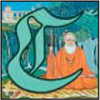 causal body: Kāraṇa śarīra, the inmost body; the soul form, also called ānandamaya kośa, “bliss sheath”. See: soul. §
causal body: Kāraṇa śarīra, the inmost body; the soul form, also called ānandamaya kośa, “bliss sheath”. See: soul. §
causal plane: The highest or most subtle realm of existence, Śivaloka. See: loka, Śivaloka.§
chakra: चक्र “Wheel.” Any of the nerve plexes or centers of force and consciousness located within the subtle bodies of man. In the physical body there are corresponding nerve plexuses, ganglia and glands. The seven principal chakras can be seen psychically as colorful, multi-petaled wheels or lotuses. They are situated along the spinal cord from the base to the cranial chamber. Additionally, seven chakras, barely visible, exist below the spine. They are seats of instinctive consciousness, the origin of jealousy, hatred, envy, guilt, sorrow, etc. They constitute the lower or hellish world, called Narakaloka or pātāla. Thus, there are 14 major chakras in all. §
The seven upper chakras, from lowest to highest, are: 1) mūlādhāra (base of spine): memory, time and space; 2) svādhishṭhāna (below navel): reason; 3) maṇipūra (solar plexus): willpower; 4) anāhata (heart center): direct cognition; 5) viśuddha (throat): divine love; 6) ājñā (third eye): divine sight; 7) sahasrāra (crown of head): illumination, Godliness. §
The seven lower chakras, from highest to lowest, are 1) atala (hips): fear and lust; 2) vitala (thighs): raging anger; 3) sutala (knees): retaliatory jealousy; 4) talātala (calves): prolonged mental confusion; 5) rasātala (ankles): selfishness; 6) mahātala (feet): absence of conscience; 7) pātāla (soles of the feet): murder and malice. See: chart on p. 42, Chapter 16. §
charyā pāda: चर्यापाद “Conduct stage.” Stage of service and character building. See: pāda, Śaivism.§
clairaudience: “Clear-hearing.” Psychic or divine hearing, divyaśravana. Hearing in one’s mind the words of inner-plane beings or earthly beings not physically present. See: clairvoyance.§
clairvoyance: “Clear-seeing.” Psychic or divine sight, divyadṛishṭi. The ability to look into the inner worlds and see auras, chakras, nāḍīs, thought forms, non-physical people and subtle forces. The ability to see from afar or into the past or future— avadhijñāna, “ knowing beyond limits.”Also the ability to separate the light that illumines one’s thoughts from the forms the light illumines. §
crown chakra: Sahasrāra chakra. The thousand-petaled cranial center of divine consciousness. See: chakra, kuṇḍalinī, yoga.§
 darśana: दर्शन “Vision, sight.” Seeing the Divine. Beholding, with inner or outer vision, a temple image, Deity, holy person or place, with the desire to inwardly contact and receive the grace and blessings of the venerated being or beings. Not only does the devotee seek to see the Divine, but to be seen as well, to stand humbly in the awakened gaze of the holy one, even if for an instant, such as in a crowded temple when thousands of worshipers file quickly past the enshrined Lord. Gods and gurus are thus said to “give” darśana, and devotees “take” darśana. This direct and personal two-sided apprehension is a central and highly sought-after experience of Hindu faith. §
darśana: दर्शन “Vision, sight.” Seeing the Divine. Beholding, with inner or outer vision, a temple image, Deity, holy person or place, with the desire to inwardly contact and receive the grace and blessings of the venerated being or beings. Not only does the devotee seek to see the Divine, but to be seen as well, to stand humbly in the awakened gaze of the holy one, even if for an instant, such as in a crowded temple when thousands of worshipers file quickly past the enshrined Lord. Gods and gurus are thus said to “give” darśana, and devotees “take” darśana. This direct and personal two-sided apprehension is a central and highly sought-after experience of Hindu faith. §
daśamāṁśa: दशमांश “One-tenth sharing.” The traditional Hindu practice of tithing, giving one-tenth of one’s income to a religious institution. It was formerly widespread in India. See: purusha dharma.§
Daśanāmī: Each of the ten renunciate orders founded by Adi Śankara during the 9th century. See: Akhara.§
deva: देव “Shining one.” A being inhabiting the higher astral plane, in a subtle, nonphysical body. Deva is also used in scripture to mean “God or Deity.” See: gana, Mahādeva.§
Devaloka: देवलोक “Plane of radiant beings.” A synonym of Maharloka, the higher astral plane, realm of anāhata chakra. See: Antarloka, loka. §
Devī: देवी “Goddess.” A name of Śakti, used especially in Śāktism. See: Śakti, Śāktism.§
dharma: धर्म From dhṛi, “to sustain; carry, hold.” Hence dharma is “that which contains or upholds the cosmos.” Dharma is a complex and comprehensive term with many meanings, including: divine law, ethics, law of being, way of righteousness, religion, duty, responsibility, virtue, justice, goodness and truth. Essentially, dharma is the orderly fulfillment of an inherent nature or destiny. Relating to the soul, it is the mode of conduct most conducive to spiritual advancement, the right and righteous path. §
Adharma: “Unrighteousness.” Thoughts, words or deeds that transgress divine law in any of the human expressions of dharma. See: dharma, pāpa, puṇya. §
dhyāna: ध्यान “Meditation.” See: rāja yoga.§
dīkshā: दीक्षा “Initiation.” Solemn induction by which one is entered into a new realm of spiritual awareness and practice by a teacher or preceptor through bestowing of blessings. Denotes initial or deepened connection with the teacher and his lineage and is usually accompanied by ceremony. Initiation, revered as a moment of awakening, may be conferred by a touch, a word, a look or a thought. See: satguru.§
Dīpāvalī: दीपावली Often spelled Dīvalī. “Row of Lights.” A very popular home and community festival in October/November when Hindus of all denominations light oil or electric lights and set off fireworks in a joyful celebration of the victory of good over evil and light over darkness. It is a Hindu solidarity day and is considered the greatest national festival of India. §
door of Brahman: Brahmarandhra, also called nirvāna chakra. A subtle or esoteric aperture in the crown of the head, the opening of sushumṇā nāḍī through which kuṇḍalinī enters in ultimate Self Realization, and the spirit escapes at death. Only the spirits of the truly pure leave the body in this way. See: jñāna, kuṇḍalinī, nāḍī.§
dualism: Dvaita. See: dvaita-advaita.§
dvaita-advaita: द्वैत अद्वैत “Dual-nondual; twoness-not twoness.” Among the most important terms in the classification of Hindu philosophies. Dvaita and advaita define two ends of a vast spectrum. —dvaita: The doctrine of dualism, according to which reality is ultimately composed of two irreducible principles, entities, truths, etc. God and soul are seen as eternally separate. —advaita: The doctrine of nondualism or monism, that reality is ultimately composed of one whole principle, substance or God, with no independent parts. In essence, all is God. —monistic theism: A dipolar view which encompasses both monism and dualism. See: dvaita, monistic theism.§
 ego: The external personality or sense of “I” and “mine,” āṇava. Broadly, individual identity. In Śaiva Siddhānta and other schools, the ego is equated with the tattva of ahaṁkāra, “I-maker,” which bestows the sense of I-ness, individuality and separateness from God. See: āṇava.§
ego: The external personality or sense of “I” and “mine,” āṇava. Broadly, individual identity. In Śaiva Siddhānta and other schools, the ego is equated with the tattva of ahaṁkāra, “I-maker,” which bestows the sense of I-ness, individuality and separateness from God. See: āṇava.§
enlightenment: Self Realization, nirvikalpa samādhi; the ultimate attainment. Enlightenment is the experience-nonexperience resulting in the realization of one’s transcendent Self—Paraśiva—which exists beyond time, form and space. Each tradition has its own understanding of enlightenment, often indicated by unique terms. See: God Realization, kuṇḍalinī, nirvikalpa samādhi, Self Realization.§
 First World: The physical universe; Bhuloka. See: Bhuloka. §
First World: The physical universe; Bhuloka. See: Bhuloka. §
freemasons (Freemansonry): The member of an international order, the Freemasonry, established for philosophical-occult studies and mutual help within its fellowship. §
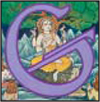 gaṇa(s): गण “Throng; troop; retinue; a body of followers or attendants.” A troop of demigods, God's attendants, devonic helpers. See: Gaṇapati, Gaṇeśa. §
gaṇa(s): गण “Throng; troop; retinue; a body of followers or attendants.” A troop of demigods, God's attendants, devonic helpers. See: Gaṇapati, Gaṇeśa. §
Gaṇapati: गणपति “Leader of the gaṇas.” A name of Gaṇeśa.§
Gaṇeśa: गणेश “Lord of Categories.” Or: “Lord of attendants (gaṇa),” synonymous with Gaṇapati. Gaṇeśa is a Mahādeva, the beloved elephant-faced Deity honored by Hindus of every sect. He is the Lord of Obstacles (Vighneśvara), revered for His great wisdom and invoked first before any undertaking, for He knows all intricacies of each soul’s karma and the perfect path of dharma that makes action successful. He sits on the mūlādhāra chakra and is easy of access. See: gaṇa, Gaṇapati, Mahādeva. §
Ganges (Gaṅgā): गंगा India’s most sacred river, 1,557 miles long, arising in the Himalayas above Hardwar under the name Bhagīratha, and being named Gaṅgā after joining the Alakanada (where the Sarasvatī is said to join them underground). Also, the Godess (Gaṅgā) that has the river as her embodiment. §
ghee: घी Hindi for clarified butter; ghṛita in Sanskrit. Butter that has been boiled and strained. An important sacred substance used in temple lamps and offered in fire ceremony, yajña. It is also used as a food with many āyurvedic virtues. See: yajña.§
God: Supernal being. Either the Supreme God, known by many names (such as Śiva, Śakti and Vishṇu), or one of the Mahādevas, great souls, who are among His creation. See: Gods, Mahādeva, Śiva. §
Goddess: Female representation or manifestation of Divinity; Śakti or Devī. Goddess can refer to a female perception or depiction of a causal-plane being (Mahādeva) in its natural state, which is genderless, or it can refer to an astral-plane being residing in a female astral body. To show the Divine’s transcendence of sexuality, sometimes God is shown as having qualities of both sexes. §
Gods: Mahādevas, “great beings of light.” In What Is Hinduism?, the plural form of God refers to extremely advanced beings existing in their self-effulgent soul bodies in the causal plane. The meaning of Gods is best seen in the phrase, “God and the Gods,” referring to the Supreme God and the Mahādevas who are His creation. See: God, Mahādeva.§
gṛihastha āśrama: गृहस्थ आश्रम “Householder stage.” See: āśrama dharma, gṛihastha dharma.§
gṛihastha dharma: गृहसथधर्म “Householder law.” The virtues and ideals of family life. This dharma includes all nonmonastics, whether married or single. In general, gṛihastha dharma begins with the completion of the period of studentship and extends throughout the period of raising a family (called the gṛihastha āśrama). Specific scriptures, called Dharma Śāstras and Gṛihya Śāstras, outline the duties and obligations of family life. In Hinduism, family life is one of serving, learning and striving within a close-knit community of many relatives forming a joint family and its broader connections as an extended family under the aegis of a spiritual guru. Each is expected to work harmoniously to further the wealth and happiness of the family and the society, to practice religious disciplines and raise children of strong moral fiber to carry on the tradition. See: āśrama dharma, dharma. §
guṇa: गुण “Strand; quality.” The three constituent principles of prakṛiti, primal nature. The three guṇas are —sattva: “Quiescent”, rarified, translucent, pervasive, reflecting the light of Pure Consciousness. —rajas: “Passion,” inherent in energy, movement, action, emotion, life. —tamas: “Darkness,” inertia, density, the force of contraction, resistance and dissolution. The guṇas are integral to Hindu thought, as all things are composed of the combination of these qualities of nature, including āyurveda, arts, environments and personalities. See: āyurveda, tattva.§
guru: गुरु “Weighty one,” indicating an authority of great knowledge or skill. A term used to describe a teacher or guide in any subject, such as music, dance, sculpture, but especially religion. For clarity, the term is often preceded by a qualifying prefix. Hence, terms such as kulaguru (family teacher), vīnaguru (vīṇa teacher) and satguru (spiritual preceptor). In Hindu astrology, guru names the planet Jupiter, also known as Bṛihaspati. According to the Advayatāraka Upanishad ( 14 – 18), guru means “dispeller (gu) of darkness (ru).” See: satguru.§
Gurudeva: गुरुदेव “Divine or radiant preceptor.” An affectionate, respectful name for the guru. See: guru, Sivaya Subramuniyaswami.§
 hatḥa yoga: हठयोग “Forceful yoga.” Haṭha yoga is a system of physical and mental exercise developed in ancient times as a means of rejuvenation by ṛishis and tapasvins who meditated for long hours, and used today in preparing the body and mind for meditation. Its elements are āsanas, cleansing practices, breath control and hand gestures (mudrās), all of which regulate the flow of prāṇa and purify the inner and outer bodies. See: āsana, kuṇḍalinī, nāḍī, rāja yoga, yoga.§
hatḥa yoga: हठयोग “Forceful yoga.” Haṭha yoga is a system of physical and mental exercise developed in ancient times as a means of rejuvenation by ṛishis and tapasvins who meditated for long hours, and used today in preparing the body and mind for meditation. Its elements are āsanas, cleansing practices, breath control and hand gestures (mudrās), all of which regulate the flow of prāṇa and purify the inner and outer bodies. See: āsana, kuṇḍalinī, nāḍī, rāja yoga, yoga.§
heaven: The celestial spheres, including the causal plane and the higher realms of the subtle plane, where souls rest and learn between births, and mature souls continue to evolve after moksha. Heaven is often used by translators as an equivalent to the Sanskrit Svarga. See: loka, Śivaloka.§
hell: Narakaloka. An unhappy, mentally and emotionally congested, distressful area of consciousness. Hell is a state of mind that can be experienced on the physical plane or in the sub-astral plane after death of the physical body. It is accompanied by the tormented emotions of hatred, remorse, resentment, fear, jealousy and self-condemnation. However, in the Hindu view, the hellish experience is not permanent, but a temporary condition of one’s own making. See: asura, evil, loka, Narakaloka. §
Hindu: हिन्दु A follower of, or relating to, Hinduism. Generally, one is understood to be a Hindu by being born into a Hindu family and practicing the faith, or by professing oneself a Hindu. Acceptance into the fold is recognized through the name-giving sacrament, a temple ceremony called nāmakaraṇa saṁskāra, given to born Hindus shortly after birth, and to self-declared Hindus who have proven their sincerity and been accepted by a Hindu community. While traditions vary greatly, all Hindus rely on the Vedas as scriptural authority. On July 2, 1995, the Supreme Court of India adopted as an “adequate and satisfactory formula” this definition by B.G. Tilak: “Acceptance of the Vedas with reverence; recognition of the fact that the means or ways to salvation are diverse; and the realization of the truth that the number of gods to be worshiped is large, that indeed is the distinguishing feature of the Hindu religion.” See: Hinduism. §
Hinduism (Hindu Dharma): हिन्दुधर्म India’s indigenous religious and cultural system, followed today by nearly one billion adherents, mostly in India, but with the large diaspora in many other countries. Also called Sanātana Dharma, “Eternal Religion” and Vaidika Dharma, “Religion of the Vedas.” Hinduism is the world’s most ancient religion and encompasses a broad spectrum of philosophies ranging from pluralistic theism to absolute monism. It is a family of myriad faiths with four primary denominations: Śaivism, Vaishṇavism, Śāktism and Smārtism. These four hold such divergent beliefs that each is a complete and independent religion. Yet, they share a vast heritage of culture and belief— karma, dharma, reincarnation, all-pervasive Divinity, temple worship, sacraments, manifold Deities, the guru-śishya tradition and a reliance on the Vedas as scriptural authority. See: Hindu.§
homa: होम “Fire-offering.” A sacred ceremony in which the Gods are offered oblations through the medium of fire in a sanctified fire pit. See: agni, yajña.§
 immanent: Indwelling; inherent and operating within. Relating to God, the term immanent means present in all things and throughout the universe, not aloof or distant. Not to be confused with imminent, about to happen; emanate, to issue from; eminent, high in rank. §
immanent: Indwelling; inherent and operating within. Relating to God, the term immanent means present in all things and throughout the universe, not aloof or distant. Not to be confused with imminent, about to happen; emanate, to issue from; eminent, high in rank. §
Ishṭa Devatā: इष्टदेवता “Cherished or chosen Deity.” The Deity that is the object of one’s special pious attention. Ishṭa Devatā is a concept common to all Hindu sects. See: mūrti, Smartism.§
 japa: जप “Recitation.” Practice of concentrated repeating of a mantra, often while counting the repetitions on a mālā, a strand of beads. It may be done silently or aloud. A major sādhana in Hindu spiritual practice, from the simple utterance of a few names of God to extraordinary feats of repeating sacred syllables millions of times for years on end. See: mantra, sadhana, tapas, yama-niyama, yoga. §
japa: जप “Recitation.” Practice of concentrated repeating of a mantra, often while counting the repetitions on a mālā, a strand of beads. It may be done silently or aloud. A major sādhana in Hindu spiritual practice, from the simple utterance of a few names of God to extraordinary feats of repeating sacred syllables millions of times for years on end. See: mantra, sadhana, tapas, yama-niyama, yoga. §
jīva: जीव “Living, existing.” From jīv, “to live.” The individual soul, ātman, during its embodied state, bound by āṇava, karma and māyā. The jīvanmukta is one who is “liberated while living.” See: ātman, soul.§
jñāna: ज्ञान “Knowledge; wisdom.” The matured state of the soul. It is the wisdom that comes as an aftermath of the kuṇḍalinī breaking through the door of Brahman into the realization of God. Jñāna is the awakened, superconscious state working within the ordinary experience of the world, flowing into daily life situations. Jñāna is sometimes misunderstood as book knowledge, as a maturity or awakening that comes from simply understanding a complex philosophical system or systems. See: door of Brahman, God Realization, samādhi, Self Realization. §
jñāna pāda: ज्ञानपाद “Stage of wisdom.” According to Śaiva Siddhānta ṛishis, jñāna is the last of the four successive pādas (stages) of spiritual unfoldment. It is the culmination of the third stage, the yoga pāda. See: jñāna, pāda. §
jyotisha: ज्योतिष From jyoti, “light.” “The science of the lights (or stars).” Hindu astrology, the knowledge and practice of analyzing events and circumstances, delineating character and determining auspicious moments, according to the positions and movements of heavenly bodies. In calculating horoscopes, jyotisha uses the sidereal (fixed-star) system, whereas Western astrology uses the tropical (fixed-date) method. §
 karma: कर्म “Action,” “deed.” One of the most important principles in Hindu thought, karma refers to a consequence or “ fruit of action”, which sooner or later returns upon the doer. What we sow, we shall reap in this or future lives. Selfish, hateful acts will bring suffering. Benevolent actions will bring loving reactions. Karma is a neutral, self-perpetuating law of the inner cosmos, much as gravity is an impersonal law of the outer cosmos. Karma is threefold: sañchita, prārabdha and kriyamāna. — sañchita karma: “Accumulated actions.” The sum of all karmas of this life and past lives. — prārabdha karma: “Actions set in motion.” That portion of sañchita karma that is bearing fruit and shaping the events and conditions of the current life, including the nature of one’s bodies, personal tendencies and associations. —kriyamāna karma: “Being made.” The karma being created and added to sañchita in this life by one’s thoughts, words and actions, or in the inner worlds between lives. Kriyamāna karma is the karma that is being sown and will be reaped in the future. §
karma: कर्म “Action,” “deed.” One of the most important principles in Hindu thought, karma refers to a consequence or “ fruit of action”, which sooner or later returns upon the doer. What we sow, we shall reap in this or future lives. Selfish, hateful acts will bring suffering. Benevolent actions will bring loving reactions. Karma is a neutral, self-perpetuating law of the inner cosmos, much as gravity is an impersonal law of the outer cosmos. Karma is threefold: sañchita, prārabdha and kriyamāna. — sañchita karma: “Accumulated actions.” The sum of all karmas of this life and past lives. — prārabdha karma: “Actions set in motion.” That portion of sañchita karma that is bearing fruit and shaping the events and conditions of the current life, including the nature of one’s bodies, personal tendencies and associations. —kriyamāna karma: “Being made.” The karma being created and added to sañchita in this life by one’s thoughts, words and actions, or in the inner worlds between lives. Kriyamāna karma is the karma that is being sown and will be reaped in the future. §
See: māyā, moksha, pāpa, puṇya, soul. §
Kārttikeya: कार्त्तिकेय Child of the Pleiades, from Kṛittikā, “Pleiades.” A son of Śiva. A great Mahādeva worshiped in all parts of India and the world. Also known as Murugan, Kumāra, Skanda, Shaṇmukhanātha, Subramaṇya and more, He is the God who guides that part of evolution which is religion, the transformation of the instinctive into a divine wisdom through the practice of yoga. He holds the holy vel of jñāna śakti, which is His Power to vanquish darkness or ignorance. §
kośa: कोश “Sheath; vessel, container; layer.” Philosophically, five sheaths through which the soul functions simultaneously in the various planes or levels of existence. They are sometimes compared to the layers of an onion. The kośas, in order of increasing subtlety, are as follows. —annamaya kośa: “Sheath composed of food.” The physical body. —prāṇamaya kośa: “Sheath composed of prāṇa (vital force).” Also known as the prāṇic or health body, or the etheric body or etheric double. —manomaya kośa: “Mind-formed sheath.” The lower astral body, from manas, “thought, will, wish.” The instinctive-intellectual sheath of ordinary thought, desire and emotion . —vijñānamaya kośa: “Sheath of cognition.” The mental or cognitive-intuitive sheath. It is the vehicle of higher thought, vijñāna —understanding, knowing, direct cognition, wisdom, intuition and creativity. —ānandamaya kośa: “Body of bliss.” The intuitive-superconscious sheath or actinic-causal body. This inmost soul form (svarūpa) is the ultimate foundation of all life, intelligence and higher faculties. See: soul, subtle body. §
Kṛishṇa: कृष्ण “Black.” Also related to kṛishṭiḥ, meaning “drawing, attracting.” One of the most popular Gods of the Hindu pantheon. He is worshiped by Vaishṇavas as the eighth avatāra, incarnation, of Vishṇu. He is best known as the Supreme Personage depicted in the Mahābhārata, and specifically in the Bhagavad Gītā. §
kriyā: क्रियापाद “Action.” 1) In a general sense, kriyā can refer to doing of any kind. Specifically, it names religious action, especially rites or ceremonies. 2) The second stage of the Śaiva path, religious action, or kriyā pāda. See: kriyā pāda, pāda. §
kriyā pāda: “Stage of religious action; worship.” The stage of worship and devotion, second of four progressive stages of maturation on the Śaiva Siddhānta path of attainment. See: pāda. §
kriyamana karma: The karma being created at present. See: Karma. §
kukarma: Karma accrued from pāpa. See: Karma, pāpa. §
Kumāra: कुमार “Virgin youth; ever-youthful.” A name of Lord Kārttikeya as an eternal bachelor. See: Kārttikeya.§
kumbha: कुम्भ “Jar or pot; water vessel.” §
Kumbha Mela: Kumbha Mela is a Hindu pilgrimage that occurs four times every twelve years, on astrologically auspicious times, in four sacred locations in India. They are attended by thousands of saints and millions of people, making them the largest human gatherings on Earth. §
kuṇḍalinī: कुण्डलिनी “She who is coiled; serpent power.” The primordial cosmic energy in every individual which, at first, lies coiled like a serpent at the base of the spine and eventually, through the practice of yoga, rises up the sushumṇā nāḍī. As it rises, the kuṇḍalinī empowers each successive chakra. Nirvikalpa samādhi, enlightenment, comes as it pierces through the door of Brahman at the core of the sahasrāra. See: chakra, door of Brahman, nāḍī, samādhi.§
 loka: लोक “World, habitat, realm, or plane of existence.” A dimension of manifest existence; cosmic region. Each loka reflects or involves a particular range of consciousness. Bhuloka is the physical plane. The Antarloka and Śivaloka are the ever-present substratum of physical existence, most frequently experienced by humans during sleep and deep meditation. Each loka is a less-refined version of the loka above it. See: Antarloka, Bhuloka, Śivaloka.§
loka: लोक “World, habitat, realm, or plane of existence.” A dimension of manifest existence; cosmic region. Each loka reflects or involves a particular range of consciousness. Bhuloka is the physical plane. The Antarloka and Śivaloka are the ever-present substratum of physical existence, most frequently experienced by humans during sleep and deep meditation. Each loka is a less-refined version of the loka above it. See: Antarloka, Bhuloka, Śivaloka.§
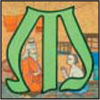 Mahābhārata: महाभारत “Great Epic of India.” The world’s longest epic poem. It revolves around the conflict between two kingdoms, the Pāṇḍavas and Kauravas, and their great battle of Kurukshetra near modern Delhi in approximately 1424 bce. Woven through the plot are countless discourses on philosophy, religion, astronomy, cosmology, polity, economics and many stories illustrative of simple truths and ethical principles. The Bhagavad Gītā is one section of the work. The Mahābhārata is revered as scripture by Vaishṇavites and Smārtas. See: Bhagavad Gītā, Itihāsa.§
Mahābhārata: महाभारत “Great Epic of India.” The world’s longest epic poem. It revolves around the conflict between two kingdoms, the Pāṇḍavas and Kauravas, and their great battle of Kurukshetra near modern Delhi in approximately 1424 bce. Woven through the plot are countless discourses on philosophy, religion, astronomy, cosmology, polity, economics and many stories illustrative of simple truths and ethical principles. The Bhagavad Gītā is one section of the work. The Mahābhārata is revered as scripture by Vaishṇavites and Smārtas. See: Bhagavad Gītā, Itihāsa.§
Mahādeva: महादेव “Great shining one; God.” Referring either to the Supreme God or any of the highly evolved beings who live in the highest planes in their natural, effulgent soul bodies. It is said in scripture that there are 330 million Gods. See: Gods, monotheism, Parameśvara, Śiva.§
mahāprasthāna: महाप्रस्थान “Great departure.” Death. §
mahāsamādhi: महासमाधि “Great enstasy.” The death, or dropping off of the physical body, of a great soul, an event occasioned by tremendous blessings. See: samādhi. §
mahātma: महात्म “Great soul.” Honorific title for thoseheld in highest esteem, especially saints. See: ātman.§
maṇipūra chakra: मणिपूरचक्र “Wheeled city of jewels.” Solar-plexus center of willpower. See: chakra.§
mantra: मन्त्र “Mystic formula.” A sound, syllable, word or phrase endowed with special power, usually drawn from scripture. Mantras are chanted loudly during pūjā to invoke the Gods and establish a spiritual force field. Certain mantras are repeated softly or mentally for japa. Hinduism’s universal mantra is Aum. To be truly effective, such mantras must be given by the preceptor through initiation. See: Aum, dīkshā, japa, pūjā, yajña. §
mārga: मार्ग “Path; way.” From mārg, “to seek.” See: pāda, San mārga.§
mauna: मौन The discipline of remaining silent. §
māyā: माया “She who measures;” or “mirific energy.” The substance emanated from God through which the world of form is manifested. Hence all creation is also termed māyā. Māyā is a key concept in Hinduism, originally meaning “supernatural power; God’s mirific energy,” often translated as “illusion.” See: loka, tattva. §
moksha: मोक्ष “Liberation.” Release from transmigration, saṁsāra, the round of births and deaths, which occurs after karma has been resolved and nirvikalpa samādhi —realization of the Self, Paraśiva—has been attained. Same as mukti. See: jīva, kuṇḍalinī, nirvikalpa samādhi, Paraśiva, rāja yoga, saṁsāra.§
monism: “Doctrine of oneness.” 1) The philosophical view that there is only one ultimate substance or principle. 2) The view that reality is a unified whole without independent parts. See: dvaita - advaita, monistic theism. §
monistic theism: Advaita Èśvaravāda. Monism is the doctrine that reality is a one whole or existence without independent parts. Theism is the belief that God exists as a real, conscious, personal Supreme Being. Monistic theism is the dipolar doctrine, also called panentheism, that embraces both monism and theism, two perspectives ordinarily considered contradictory or mutually exclusive, since theism implies dualism. Monistic theism simultaneously accepts that God has a personal form, that He creates, pervades and is all that exists—and that He ultimately transcends all existence and that the soul is, in essence, one with God. See: dvaita-advaita, panentheism, theism. §
mudrā: मुद्रा “Seal.” Esoteric hand gestures which express specific energies or powers. Usually accompanied by precise visualizations, mudrās are a vital element of ritual worship (pūjā), dance and yoga. See: añjali mudrā, haṭha yoga. §
mūlādhāra chakra: मूलाधारचक्र “Root-support wheel.” Four-petaled psychic center at the base of the spine; governs memory. See: chakra.§
mūrti: मूर्ति “Form; manifestation, embodiment, personification.” An image, icon or effigy of God or a God used during worship. Other Deity representations include symbols, e.g., the banyan tree, and geometric emblems or designs such as yantras and maṇḍalas.§
Murugan: முருகன் “Beautiful one,” a favorite name of Kārttikeya among the Tamils of South India, Sri Lanka and elsewhere. See: Kārttikeya.§
 nāḍī: नाडी “Conduit; river.” A nerve fiber or energy channel of the subtle (inner) bodies of man. It is said there are 72,000 nāḍīs. These interconnect the chakras. The three main nāḍīs are iḍā, piṅgalā and sushumṇā. — ida is pink and feminine. It flows downward, ending on the left side of the body. It is the channel of physical-emotional energy. — pingala is blue and masculine. It flows upward, ending on the right side of the body. It is the channel of intellectual-mental energy. — sushumna is the major nerve current which passes through the spinal column from the muladhara chakra at the base to the sahasrara at the crown of the head. It is the channel of kundalini. See: chakra, kuṇḍalinī, rāja yoga.§
nāḍī: नाडी “Conduit; river.” A nerve fiber or energy channel of the subtle (inner) bodies of man. It is said there are 72,000 nāḍīs. These interconnect the chakras. The three main nāḍīs are iḍā, piṅgalā and sushumṇā. — ida is pink and feminine. It flows downward, ending on the left side of the body. It is the channel of physical-emotional energy. — pingala is blue and masculine. It flows upward, ending on the right side of the body. It is the channel of intellectual-mental energy. — sushumna is the major nerve current which passes through the spinal column from the muladhara chakra at the base to the sahasrara at the crown of the head. It is the channel of kundalini. See: chakra, kuṇḍalinī, rāja yoga.§
nakshatra: नक्षत्र “Star cluster.” Central to astrological determinations, the nakshatras are 27 star-clusters, constellations, which lie along the ecliptic, or path of the sun. An individual’s nakshatra, or birth star, is the constellation the moon was aligned with at the time of birth. See: jyotisha.§
Namaḥ Śivāya: नमः शिवाय “Adoration (homage) to Śiva.” The supreme mantra of Śaivism. See: japa, mantra, Śaivism. §
nāmakaraṇa saṁskāra: नामकरण “Name-giving” and formal entry into one or another sect of Hinduism, performed 11 to 4 1days after birth. The name is chosen according to astrology, preferably the name of a God or Goddess. At this time, guardian devas are assigned to see the child through life. One who converts to or adopts Hinduism later in life would receive this same sacrament. See: saṁskāra.§
Narakaloka: नरक Abode of darkness. The nether worlds. Equivalent to the Western term hell, a gross region of the Antarloka . Naraka is a congested, distressful area where demonic beings and young souls may sojourn until they resolve the darksome karmas they have created. Here beings suffer the consequences of their own misdeeds in previous lives. Narakaloka is understood as having seven regions, called tala, corresponding to the states of consciousness of the seven lower chakras. They are described as places of torment, pain, darkness, confusion and disease, but these are only temporary abodes for the evolving soul. Hinduism has no eternal hell. See: Antarloka, chakra, hell, loka. §
Nātha: नाथ “Master, lord; adept.” Names an ancient Himalayan tradition of Śaiva-yoga mysticism whose first historically known exponent was Nandikesvara (ca 250 bce), and the extraordinary ascetic masters (or devotees) of this school. The Nāthas are considered the source of haṭha as well as rāja yoga. See: paramparā, rāja yoga.§
nirvikalpa samādhi: निर्विकल्पसमाधि “Undifferentiated trance, enstasy (samādhi) without form or seed.” The realization of the Self, Paraśiva, a state of oneness beyond all change or diversity; beyond time, form and space. Vikalpa means “diversity, thought; difference of perception, distinction.” Nir means “without.” See: Paraśiva, rāja yoga, samādhi.§
niyama: नियम “Restraint.” See: yama-niyama. §
 pāda: पाद “The foot (of men and animals); quarter-part, section; stage; path.” Names the major sections of the Āgamic texts and the corresponding stages of practice and unfoldment on the path to moksha. According to Śaiva Siddhānta, there are four pādas, which are successive and cumulative. In accomplishing each one, the soul prepares itself for the next. —charyā pāda: “Good conduct stage.” The first stage where one learns to live righteously, serve selflessly, performing karma yoga. —kriyā pāda: “Religious action; worship stage.” Stage of bhakti yoga, of cultivating devotion through performing pūjā and regular daily sādhana. —yoga pāda: Having matured, the soul now turns to internalized worship and rāja yoga under the guidance of a satguru. It is a time of sādhana and serious striving when realization of the Self is the goal. —jñāna pāda: “Stage of wisdom.” Once the soul has attained Realization, it is henceforth a wise one, shedding blessings on mankind. This stage is also called the San Mārga, “true path,” on which God is our dearest beloved; implying transcendence of individuality and merger with the Divine. See: jñāna, §
pāda: पाद “The foot (of men and animals); quarter-part, section; stage; path.” Names the major sections of the Āgamic texts and the corresponding stages of practice and unfoldment on the path to moksha. According to Śaiva Siddhānta, there are four pādas, which are successive and cumulative. In accomplishing each one, the soul prepares itself for the next. —charyā pāda: “Good conduct stage.” The first stage where one learns to live righteously, serve selflessly, performing karma yoga. —kriyā pāda: “Religious action; worship stage.” Stage of bhakti yoga, of cultivating devotion through performing pūjā and regular daily sādhana. —yoga pāda: Having matured, the soul now turns to internalized worship and rāja yoga under the guidance of a satguru. It is a time of sādhana and serious striving when realization of the Self is the goal. —jñāna pāda: “Stage of wisdom.” Once the soul has attained Realization, it is henceforth a wise one, shedding blessings on mankind. This stage is also called the San Mārga, “true path,” on which God is our dearest beloved; implying transcendence of individuality and merger with the Divine. See: jñāna, §
pādukā: पादुका “Sandals.” Śrī Pādukā refers to the sandals of the preceptor, the traditional icon of the guru, representing his venerable feet and worshiped as the source of grace. See: bhakti, guru, prasāda, satguru.§
panchangam: The traditional Hindu astrological calendar and almanac. Panchangams are used to determine the optimum times for all activities. See: jyotisha. §
panentheism: “All-in-God doctrine.” The view that the universe is part of the being of God. Panentheism is the technical term for monistic theism. See: dvaita-advaita, monistic theism, pantheism. §
pantheism: “All-is-God doctrine.” A term applied to a variety of philosophical positions in which God and the world are identical. To the pantheist, God is not a Personal Lord, nor a transcendent or formless Being, but is the totality of all existence, including universal laws, movement, matter, etc. See also: monistic theism, panentheism. §
pāpa: पाप “Wickedness or sin;” “crime.” 1) Bad or evil. 2) Wrongful action. 3) Demerit earned through wrongdoing. Pāpa includes all forms of wrongdoing, from the simplest infraction to the most heinous crime. The degree of pāpa accrued from an action depends on various factors, including the karma, dharma and spiritual advancement of the individual, the intent or motivation, as well as the time and place of the action. Pāpa is the opposite of puṇya (merit, virtue) . See: evil, karma, puṇya.§
paramaguru: परमगुरु “Grand preceptor.” The guru of a disciple’s guru. §
paramahaṁsa: परमहंस “Supreme swan.” From haṁsa, meaning swan or, more precisely, the high-flying Indian goose, Anser Indicus. A class of liberated renunciates. See: haṁsa. §
Parameśvara: परमेश्वर “Supreme Lord or Ruler.” God Śiva’s third perfection, Supreme Mahādeva, Śiva-Śakti, mother of the universe. In this perfection, Śiva is a person. The term Primal Soul designates Parameśvara as the original, uncreated soul, the creator of all other souls. See: God, Parāśakti, Paraśiva, Śiva.§
paramparā: परंपरा “Uninterrupted succession.” A lineage of gurus, initiating successors and passing on the power through the ages. §
Parāśakti: पराशक्ति “Supreme power; primal energy.” God Śiva’s second perfection, which is impersonal, immanent, and with form—the all-pervasive, Pure Consciousness and Primal Substance of all that exists. There are many other descriptive names for Parāśakti—Satchidānanda (“existence-consciousness-bliss”), light, silence, divine mind, superconsciousness and more. Parāśakti can be experienced by the diligent yogī or meditator as a merging in, or identification with, the underlying oneness flowing through all form. The experience is called savikalpa samādhi. See: rāja yoga, Śakti, samādhi, Satchidānanda, tattva. §
Paraśiva: परशिव “Transcendent Śiva.” The Self God, Śiva’s first perfection, Absolute Reality. Paraśiva is That which is beyond the grasp of consciousness, transcends time, form and space and defies description. To merge with the Absolute in mystic union is the ultimate goal of all incarnated souls, the reason for their living on this planet, and the deepest meaning of their experiences. Attainment of this is called Self Realization or nirvikalpa samādhi. See: nirvikalpa samādhi, samādhi, Śiva.§
Patanjali (Patañjali): पतज्जलि A Śaivite Nātha siddha (ca 200 BCE) who codified the ancient rāja yoga philosophy which outlines the path to enlightenment through purification, control and transcendence of the mind. His great work, the Yoga Sūtras, comprises some 200 aphorisms and is the foremost ancient text on meditative yoga. See: rāja yoga, yoga. §
Pillayar: Tamil name for Ganeśa . See: Ganeśa. §
piṅgalā: पिंगला “Tawny channel.” The masculine psychic current flowing along the spine. See: kuṇḍalinī, nāḍī, rāja yoga.§
plane: A stage or level of existence. See: loka. §
polytheism: Belief in or worship of many Gods. See also: monotheism, pantheism, panentheism.§
prāṇa: प्राण Vital energy or life principle. While prāṇa usually refers to the life principle, it sometimes denotes energy, breath, the power or the animating force of the cosmos, the sum total of all energy and forces. See: kośa, tattva.§
prāṇāyāma: प्राणायाम “Breath control.” See: rāja yoga.§
prapatti: प्रपत्ति “Throwing oneself down.” Bhakti, total, unconditional submission to God, often coupled with the attitude of personal helplessness, self-effacement and resignation. See: bhakti, pāda.§
prārabdha karma: प्ररब्धकर्म “Action that has been unleashed or aroused.” See: karma. §
prasāda: प्रसाद “Clarity, brightness; grace.” Food offered to the Deity or the guru, or the blessed remnants of such food. §
prāyaśchitta: प्रायश्चित्त “Predominant thought or aim.” Penance. Acts of atonement, burning karma before it manifests. See: pāpa, puṇya. §
prāyopaveśa: प्रायोपवेश “Resolving to die through fasting.” Self-willed death by fasting. See: death, suicide.§
Pretaloka: प्रेतलोक “World of the departed.” The realm of the earth-bound souls. This lower region of Bhuvarloka is an astral duplicate of the physical world. See: Antarloka, loka. §
psychic: “Of the psyche or soul.” Sensitive to spiritual processes and energies. Inwardly or intuitively aware of nonphysical realities; able to use powers such as clairvoyance, clairaudience and precognition. Nonphysical, subtle; pertaining to the deeper aspects of man. §
pūjā: पूजा “Worship, adoration.” An Āgamic rite of worship performed in the home, temple or shrine, to the mūrti, śrī pādukā, or other consecrated object, or to a person, such as the satguru. Its inner purpose is to purify the atmosphere around the object worshiped, establish a connection with the inner worlds and invoke the presence of God, Gods or one’s guru. Pūjā, the worship of a mūrti through water, lights and flowers in temples and shrines, is the Āgamic counterpart of the Vedic yajña rite, in which offerings are conveyed through the sacred homa fire. See: pujārī, yajña. §
pujārī: पुजारी “Worshiper.” A general term for Hindu temple priests, as well as anyone performing pūjā. See: pūjā.§
punarjanma: पुनर्जनम “Reincarnation.” From punaḥ, “again and again,” and janma, “taking birth.” See: reincarnation. §
puṇya: पुण्य “Holy; virtuous; auspicious.” 1) Good or righteous. 2) Meritorious action. 3) Merit earned through right thought, word and action. Puṇya includes all forms of doing good, from the simplest helpful deed to a lifetime of conscientious beneficence. Each act of puṇya carries its karmic consequence. Puṇya is earned through virtuous living, following the multi-faceted laws of dharma. Puṇya depends on purity of acts according to various factors including 1) the karma and evolution of the individual, 2) degree of sacrifice and unselfish motivation and 3) time and place. (Opposite of pāpa.) See: karma, pāpa. §
Purāṇa: पुराण “Ancient lore.” Hindu folk narratives containing ethical and cosmological teachings relative to Gods, man and the world. There are 18 major Purāṇas which are designated as either Śaivite, Vaishṇavite or Śākta. See: smriti.§
purusha dharma: पुरुषधर्म “A man’s code of duty and conduct.” See: dharma. §
 rajas: रजस् “Passion; activity.” See: guṇa.§
rajas: रजस् “Passion; activity.” See: guṇa.§
rāja yoga: राजयोग “King of yogas,” also known as ashṭāṅga yoga, “eight-limbed yoga.” The classical yoga system of eight progressive stages to Illumination as described in various yoga Upanishads, the Tirumantiram and, most notably, the Yoga Sūtras of Patanjali. The eight limbs are: 1) —yama: “Restraint.” 2) — niyama: “Observance.” 3) — āsana: “Seat or posture.” 4) — prāṇāyāma: “Breath control.” 5) — pratyāhāra: “Withdrawal.” 6) — dhāraṇā: “Concentration.” 7) — dhyāna: “Meditation.” 8) — samādhi: “Enstasy.” See: āsana, samādhi, yoga. §
Rāma: राम Venerated hero of the Rāmāyaṇa epic, and one of the two most popular incarnations of Vishṇu, along with Kṛishṇa. His worship is almost universal among Vaishṇavas, and extensive among Smārtas and other liberal Hindus. He was a great worshiper of Śiva, and a Śiva temple, called Rameshvaram, was built in his name at the southern tip of India. §
Rāmāyaṇa: रामायण “Life of Rāma.” One of India’s two grand epics (Itihāsa) along with the Mahābhārata. It is Valmiki’s tragic love story of Rāma and Sītā, whose exemplary lives have helped set high standards of dignity and nobility as an integral part of Hindu dharma. Astronomical data in the story puts Rāma’s reign at about 2015 BCE. See: Rāma.§
reincarnation: “Re-entering the flesh.” Punarjanma; metempsychosis. The process wherein souls take on a new physical body through the birth process. It is a repetitive cycle, known as punarjanma, which originates in the subtle plane (Antarloka), the realm in which souls live between births and return to after death. Here they are assisted in readjusting to the “in-between” world and eventually prepared for yet another birth. The quality and nature of the birth depends on the merit or demerit of their past actions (karma) and on the needs of their unique pattern of development and experience (dharma). The cycle of reincarnation ends when karma has been resolved and the Self God (Paraśiva) has been realized. This condition of release is called moksha. Then the soul continues to evolve and mature, but without the need to return to physical existence. See: karma, moksha, saṁsāra, soul. §
ṛishi: ऋषि “Seer.” A term for an enlightened being, emphasizing psychic perception and visionary wisdom. In the Vedic age, ṛishis lived in remote retreats, either alone or with disciples. These ṛishis were great souls who were the inspired conveyers of the Vedas. See: śṛuti.§
 sādhana: साधन “Effective means of attainment.” Religious or spiritual disciplines, such as pūjā, yoga, meditation, japa, fasting and austerity. The effect of sādhana is the building of willpower, faith and confidence in oneself and in God, Gods and guru. Sādhana harnesses and transmutes the instinctive-intellectual nature, allowing progressive spiritual unfoldment into the superconscious realizations and innate abilities of the soul. See: pāda, rāja yoga. §
sādhana: साधन “Effective means of attainment.” Religious or spiritual disciplines, such as pūjā, yoga, meditation, japa, fasting and austerity. The effect of sādhana is the building of willpower, faith and confidence in oneself and in God, Gods and guru. Sādhana harnesses and transmutes the instinctive-intellectual nature, allowing progressive spiritual unfoldment into the superconscious realizations and innate abilities of the soul. See: pāda, rāja yoga. §
sādhu: साधु “Virtuous one; straight, unerring.” A holy man dedicated to the search for God. A sādhu may or may not be a yogī or a sannyāsin, or be connected in any way with a guru or legitimate lineage. Sādhus usually have no fixed abode and travel unattached from place to place, often living on alms. See: sannyāsin.§
sādhvī: साध्वी Feminine of sādhu. See: sādhu.§
sahasrāra chakra: सहस्रारचक्र The cranial psychic force center. “Thousand-spoked wheel.” See: chakra. §
Śakti: शक्रि “Power, energy.” The active power or manifest energy of God that pervades all of existence. Its most refined aspect is Parāśakti, or Satchidānanda, the pure consciousness and primal substratum of all form. In popular, village Hinduism, the unity of Śiva and Śakti is replaced with the concept of Śiva and Śakti as separate entities. Śakti is represented as female, and Śiva as male. §
Within the Śākta religion, the worship of the Goddess is paramount, in Her many fierce and benign forms. Śakti is the Divine Mother of manifest creation. The forms of the Goddess include Kālī, Durgā, Umā, Pārvatī and Annapūrṇā. §
In the yoga mysticism of all traditions, divine energy, śakti, is experienced within the human body in three aspects: 1) the feminine force, iḍā śakti, 2) the masculine force, piṅgalā śakti, and 3) the pure androgynous force, kuṇḍalinī śakti, that flows through the sushumṇā nāḍī. §
Śakti is most easily experienced by devotees as the sublime, bliss-inspiring energy that emanates from a holy person or sanctified Hindu temple. See: Ardhanārīśvara, nāḍī, Parāśakti, Śāktism.§
Śāktism (Śākta): शाक्त “Doctrine of power.” The religion followed by those who worship the Supreme as the Divine Mother—Śakti or Devī—in Her many forms, both gentle and fierce. Śāktism is one of the four primary sects of Hinduism. Śāktism’s first historical signs are thousands of female statuettes dated ca 5500 BCE recovered at the Mehrgarh village in India. Four major expressions of Śāktism are evident today: folk-shamanism, yoga, devotionalism and universalism. There are many varieties of folk Śāktism gravitating around various forms of the Goddess, such as Kālī, Durgā and a number of forms of Amman. See: Ishṭa Devatā, Śakti, tantrism.§
Śaivism (Śaiva): The religion followed by those who worship Śiva as Supreme God. The oldest of the four sects of Hinduism. There are many schools of Saivism, all firmly based on the Vedas and Saiva Agamas. See: God, Śakti, Śiva, Parameśvara, Paraśakti, Paraśiva.§
samādhi: समाधि “Enstasy,” “Sameness; contemplation; union, wholeness; completion, accomplishment.” Samādhi is the state of true yoga, in which the meditator and the object of meditation are one. Samādhi is of two levels. The first is savikalpa samādhi, identification or oneness with the essence of an object. Its highest form is the realization of the primal substratum or pure consciousness, Satchidānanda. The second is nirvikalpa samādhi (“enstasy without form” or “seed”), identification with the Self, in which all modes of consciousness are transcended and Absolute Reality, Paraśiva, beyond time, form and space, is experienced. This brings in the aftermath a complete transfomation of consciousness. See: kuṇḍalinī, Paraśiva, rāja yoga, Satchidānanda, Self Realization.§
saṁsāra: संसार “Flow.” The phenomenal world. Transmigratory existence, fraught with impermanence and change, joy and suffering. The cycle of birth, death and rebirth; the total pattern of successive earthly lives experienced by a soul. See: karma, reincarnation. §
saṁskāra: संस्कार “Impression, activator; sanctification, preparation.” A deep impression made on the subconscious mind by intense circunstances (on this or previous lives), which then influence all of life, one’s nature, responses, states of mind, in a positive or negative fashion. Hindu sacraments or rites are done to create beneficial saṁskāras, marking a significant transition of life. These make deep and positive impressions on the mind of the recipient, inform the family and community of changes in the lives of its members and secure inner-world blessings. Some of the most important are: —nāmakaraṇa, name-giving; —vivāha, marriage; —antyeshṭi, funeral rites. See: sacrament. §
Sanātana Dharma: सनातनधर्म “Eternal religion” or “Everlasting path.” It is a traditional designation for the Hindu religion. See: Hinduism. §
Sanchita karma: All the karma set in motion by an individual yet to be resolved. See: Karma. §
San Mārga: सन्मार्ग “True path.” The straight, spiritual path leading to the ultimate goal, Self Realization, without detouring into unnecessary psychic exploration or pointless development of siddhis. A San Mārgī is a person “on the path,” as opposed to a saṁsārī, one engrossed in worldliness. San Mārga also names the jñāna pāda. See: sādhana, saṁsāra.§
sannyāsa: संन्यास “Renunciation.” “Throwing down or abandoning.” Sannyāsa is the repudiation of the dharma of the householder, including its obligations and duties, and the acceptance of the even more demanding dharma of the renunciate. See: sannyāsa dharma, sannyāsa dīkshā.§
sannyāsa āśrama: संन्यास आश्रम “Renunciate stage.” The period of life after age 72. See: āśrama. §
sannyāsa dharma: संन्यासधर्म “Renunciate virtue.” The life, way and traditions of those who have irrevocably renounced prerogatives and obligations of the householder, including personal property, wealth, ambitions, social position and family ties, in favor of the full-time monastic quest for divine awakening, Self Realization and spiritual upliftment of humanity. Traditionally, this dharma is available to those under age 25 who meet strict qualifications. Alternately, the householder may embrace sannyāsa dharma after age 72 through the customary initiatory rites given by a sannyāsin and then diligently pursuing his spiritual sādhana in a state of genuine renunciation and not in the midst of his family. These two forms of sannyāsa are not to be confused with simply entering the sannyāsa āśrama, the last stage of life. See: sannyāsa, sannyāsa dīkshā, sannyāsin. §
sannyāsa dīkshā: संन्यासदीक्षा “Renunciate initiation.” This dīkshā is a formal rite, or less often an informal blessing, entering the devotee into renunciate monasticism, binding him for life to certain vows which include chastity, poverty and obedience, and directing him on the path to Self Realization. See: sannyāsa dharma. §
sannyāsin: संन्यासिन् “Renouncer.” One who has taken sannyāsa dīkshā. A Hindu monk, swāmī, and one of a world brotherhood (or holy order) of sannyāsins. Some are wanderers and others live in monasteries. The sannyāsin is the guardian of his religion, immersed in it constantly, freed from worldliness, freed from distraction, able to offer his work and his worship in unbroken continuity and one-pointed effectiveness. He undertakes certain disciplines including the purification of body, mind and emotion. He restrains and controls the mind through his sādhana, tapas and meditative regimen. He unfolds from within himself a profound love of God and the Gods. His practice of upāsanā, worship, is predominantly internal, seeking God within. See: sannyāsa, sannyāsa dharma, sannyāsa dīkshā, swāmī. §
Sanskrit (Saṁskṛita): संस्कृत “Well-made,” “refined,” “perfected.” The classical sacerdotal language of ancient India, considered a pure vehicle for communication with the celestial worlds. It is the primary language in which Hindu scriptures are written, including the Vedas and Āgamas. §
Sarasvatī: सरस्वती “The flowing one.” Śakti, the Universal Mother, as Goddess of the arts and learning, mythological consort of the God Brahmā. Sarasvatī, the river Goddess, is usually depicted wearing a white sārī and holding a vīna, sitting upon a swan or lotus flower. Prayers are offered to her for refinements of art, culture and learning. See: Śakti.§
Satchidānanda: सत्चिदानन्द “Existence-consciousness-bliss.” A synonym for Parāśakti. Also called pure consciousness, pure form, substratum of existence, and more. One of the goals of the meditator is to experience the natural state of the mind, Satchidānanda, immersed in savikalpa samādhi. See: Parāśakti. §
satguru (sadguru): सद्गुरु “True weighty one.” A spiritual preceptor of the highest attainment and authority—one who has realized the ultimate Truth, Paraśiva, through nirvikalpa samādhi —a free being able to lead others securely along the spiritual path. He is always a sannyāsin, an unmarried renunciate. All Hindu denominations teach that the grace and guidance of a living satguru is a necessity for Self Realization. He is recognized and revered as the embodiment of God, Sadāśiva, the source of grace and liberation. See: guru, diksha.§
sattva guṇa: सत्त्वगुण “Perfection of Being.” The quality of goodness or purity. See: guṇa. §
savikalpa samādhi: सविकल्पसमाधि “Enstasy with form (or seed).” See: rāja yoga, samādhi.§
Second World: The astral or subtle plane. See: Antarloka, loka.§
Self (Self God): God Śiva’s perfection of Absolute Reality, Paraśiva—That which abides at the core of every soul. See: Paraśiva. §
Self Realization: Direct knowing of the Self God, Paraśiva. Self Realization is known in Sanskrit as nirvikalpa samādhi, the ultimate spiritual attainment . See: God Realization, kuṇḍalinī, moksha, Paraśiva, rāja yoga, samādhi.§
sevā: सेवा “Service,” karma yoga, an integral part of the spiritual path, doing selfless, useful work for others, such as volunteer work at a temple, without preference or thought of personal gain. Sevā, or Sivathondu in Tamil, is the central practice of the charyā pāda. See: yoga.§
siddha: सिद्ध A “perfected one’’ or accomplished yogī, a person of great spiritual attainment or powers. See: guru, siddhi. §
siddhānta: सिद्धान्त “Final attainments;” “final conclusions.” Siddhānta refers to ultimate understanding arrived at in any given field of knowledge. §
siddhi: सिद्धि “Power, accomplishment; perfection.” Extraordinary powers of the soul, developed through consistent meditation and deliberate tapas, or awakened naturally through spiritual maturity and yogic sādhana. The supreme siddhi is realization of the Self, Paraśiva. See: prapatti. §
śishya: शिष्य “A pupil or disciple,” especially one who has proven himself and been accepted by a guru. §
Śiva: शिव The “Auspicious,” “Gracious,” or “Kindly one.” Supreme Being of the Śaivite religion. God Śiva is All and in all, simultaneously the creator and the creation, both immanent and transcendent. As personal Deity, He is Creator, Preserver and Destroyer. He is a one Being, perhaps best understood in three perfections: Parameśvara (Primal Soul), Parāśakti (Pure Consciousness) and Paraśiva (Absolute Reality). See: Parameśvara, Parāśakti, Paraśiva, prapatti, Śaivism, Satchidānanda. §
Śivaliṅga: शिवलोङ्ग “Mark,” “Token” or “Sign of Śiva.” The most prevalent emblem of Śiva, found in virtually all Śiva temples. A rounded, elliptical, aniconic image, usually set on a circular base, or pīṭha, the Śivaliṅga is the simplest and most ancient symbol of Śiva, especially of Paraśiva, God beyond all forms and qualities. The pīṭha represents Parāśakti, the manifesting power of God. Liṅgas are usually of stone (carved or naturally existing, svayambhū, such as shaped by a swift-flowing river), but may also be of metal, precious gems, crystal, wood, earth or transitory materials such as ice. See: mūrti, Śaivism.§
Śivaloka: शिवलोक “Realm of Śiva.” See: heaven, loka. §
Skanda: स्कन्द “Quicksilver;” “leaping one.” One of Lord Kārttikeya’s oldest names. His form as scarlet-hued warrior God. See: Kārttikeya.§
Smārta: स्मार्त “Of or related to smṛiti,” the secondary Hindu scriptures. See: Smārtism, smṛiti.§
Smārtism: स्मार्तिस्म् Sect based on the secondary scriptures (smṛiti). The most liberal of the four major Hindu denominations, an ancient Vedic brāhminical tradition (ca 700 BCE) which from the 9th century onward was guided and deeply influenced by the Advaita Vedānta teachings of Adi Shankara. Its adherents rely mainly on the classical smṛiti literature, especially the Itihāsas (Rāmāyana and Mahābhārata, the latter of which includes the Bhagavad Gītā), Purāṇas and Dharma Śāstras. These are regarded as complementary to and a means to understanding the Vedas. Smārtas adhere to Shankara’s view that all Gods are but various representations of Saguṇa Brahman. Thus, Smārtas are avowedly eclectic, worshiping all the Gods and discouraging sectarianism. The Smārta system of worship reinforces this outlook by including the major Deity of each primary Hindu sect of ancient days: Gaṇeśa, Sūrya, Vishṇu, Śiva and Śakti, with the addition of a sixth Deity, Kumāra. One among them is generally chosen as the devotee’s preferred Deity, Ishṭa Devatā. For spiritual authority, Smārtas look to the regional monasteries established across India by Shankara, and to their pontiffs. These are the headquarters of ten orders of renunciate monks who spread the Advaita Vedānta teachings far and wide. See: Daśanāmī.§
smṛiti: स्मॄति That which is “remembered;” the tradition. Hinduism’s nonrevealed, secondary but deeply revered scriptures, derived from man’s insight and experience. Smṛiti speaks of secular matters as well as spiritual lore, ranging from day-to-day rules and regulations to enlightened teachings. See: Mahābhārata, Rāmāyaṇa.§
soul: The real being of man, as distinguished from body, mind and emotions. The soul—known as ātman or purusha —is the sum of its two aspects, the form or body of the soul and the essence of the soul. —essence or nucleus of the soul: Man’s innermost and unchanging being—Pure Consciousness (Parāśakti or Satchidānanda) and Absolute Reality (Paraśiva). This essence was never created, does not change or evolve and is eternally identical with God Śiva’s perfections of Parāśakti and Paraśiva. —soul body: ānandamaya kośa (“sheath of bliss”), also referred to as the “causal body” (kāraṇa śarīra), names the soul’s manifest nature as an individual being—an effulgent, human-like form composed of light. It is the emanational creation of God, destined to one day merge back into Him. During its evolution, the soul functions through four types of outer sheaths that envelop the soul form—mental, instinctive-intellectual, vital and physical. See: ātman, Parāśakti, Paraśiva, Satchidānanda.§
śruti: श्रुति That which is “heard.” Hinduism’s revealed scriptures, of supreme theological authority and spiritual value. They are timeless teachings transmitted to ṛishis, or seers, directly by God thousands of years ago. Śruti consists of the Vedas and the Āgamas, preserved through oral tradition and eventually written down in Sanskrit. Among the many sacred books of the Hindus, these two bodies of knowledge are held in the highest esteem. Most mantras are drawn from śruti, used for rites of worship, both public and domestic, as well as personal prayer and japa. Traditionally śruti is not read, but chanted according to extremely precise rules of grammar, pitch, intonation and rhythm. In the sacred language of śruti, word and meaning are so closely aligned that hearing these holy scriptures properly chanted is magical in its effect upon the soul of the listener. See: Āgamas, smṛiti, Vedas. §
strī dharma: स्त्रिधर्म “Womanly conduct.” See: dharma.§
Subramuniyaswami: சுப்பிரமுனியசுவாமி Satguru Sivaya Subramuniyaswami, founder of HINDUISM TODAY, 162 nd satguru ( 1927 – 2001) of the Nandinātha Sampradāya’s Kailāsa Paramparā. He was ordained Sivaya Subramuniyaswami by Sage Yogaswami on the full-moon day of May 12, 1949, in Jaffna, Sri Lanka. Before his meeting with Yogaswami, he had attained nirvikalpa samādhi in the caves of Jalani. Satguru Sivaya Subramuniyaswami is recognized worldwide as one of foremost Hindu ministers of our times, contributing to the revival of Hinduism in immeasurable abundance. He was simultaneously a staunch defender of traditions, as the tried and proven ways of the past, and a fearless innovator, setting new patterns of life for contemporary humanity. He is succeeded by Satguru Bodhinatha Veylanswami, the 163rd satguru of the Kailāsa Paramparā. See: Bodhinatha Veylanswami, parampara, Yogaswami. §
Supreme God: Highest God, the source or creator of all other Gods, beings and all manifestation. See: Brahman, Śakti, Śiva, Vishṇu.§
svadharma: स्वधर्म “One’s own way.” See: dharma. §
svādhishṭhāna: स्वाधिष्ठान “One’s own base.” See: chakra. §
swāmī: स्वामी “Lord; owner; self-possessed.” He who knows or is master of himself. A respectful title for a Hindu monk, usually a sannyāsin, an initiated, orange-robed renunciate, dedicated wholly to religious life. As a sign of respect, the term swāmī is sometimes applied more broadly to include non-monastics dedicated to spiritual work. See: sannyāsa dharma, sannyāsin. §
swāminī: स्वामिनी The feminine form of swāmī. See: sadhvi, sannyāsa, swāmī. §
swastika: स्वस्तिक “Sign of auspiciousness.” From su, “wellness,” “auspiciousness” and astu, “be it so.” The ancient Hindu symbol of auspiciousness and good fortune, representing the sun and often associated with Gaṇeśa. It has been a prominent symbol in many cultures. §
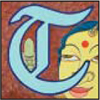 tamas (tamasic): तमस् “Force of inertia.” See: guṇa.§
tamas (tamasic): तमस् “Force of inertia.” See: guṇa.§
tantra: तन्त्र “Loom, methodology.” 1) Most generally, a synonym for śāstra, “scripture.” 2) A specific method, technique or spiritual practice within the Śaiva and Śākta traditions. §
tapas: तपस् “Heat, fire; ardor.” Purificatory spiritual disciplines, severe austerity, penance and sacrifice. The endurance of performing extreme religious austerities, with the aim of spiritual transformation and unfoldment. By comparison, sādhana is austerity of a simple, sustained kind, while tapas is austerity of a severe, psyche-transforming nature. See: kuṇḍalinī, sādhana. §
tattva: तत्त्व “That-ness” or “essential nature.” Tattvas are the primary principles, elements, states or categories of existence, the building blocks of the universe. God constantly creates, sustains the form of and absorbs back into Himself His creations. Ṛishis describe this emanational process as the unfoldment of tattvas, stages or evolutes of manifestation, descending from subtle to gross. At mahāpralaya, cosmic dissolution, they enfold into their respective sources, with only the first two tattvas surviving the great dissolution. Beyond tattvas lies Paraśiva—the utterly transcendent, Absolute Reality, called attava. §
The Sāṅkhya system discusses 25 tattvas. Śaivism recognizes these same 25 plus 11 beyond them, making 36 tattvas in all. These are divided into three groups: §
—The Śuddha tattvas: Actinic or spiritual energy. This is the superconscious realm, also known as śuddha (pure) māyā or mahāmāyā. Bindu, transcendent light, is the “material” cause of this pure sphere. This is the Śivaloka, the region of the 330 million Gods, the myriad ṛishis and other beings who have attained freedom from the triple bondage. §
—The Śuddhāśuddha tattvas: Actinodic, or spiritual-magnetic, energy. The seven tattvas from māyā to purusha make up the śuddhāśuddha (pure-impure) realm. §
—the Aśuddha tattvas: Odic, or magnetic, energy. These 24 categories make up the “world” of aśuddha (impure) māyā. This is the realm of the astral and physical planes, in which souls function through the grosser bodies, depending on their level of embodiment. §
See: guṇa, soul, Śiva (also, chart on p. 43.)§
Third World: Śivaloka, “realm of Śiva”. The spiritual realm or causal plane wherein Mahādevas and highly evolved souls live in their own self-effulgent forms. See: loka, heaven.§
tilaka: तिलक Marks made on the forehead or the brow with clay, ashes or sandalwood paste as an indication of sectarian affiliation. Vaishṇavas wear a vertical v-shaped tilaka made from clay. The Śaivite tilaka, called tripuṇḍra, consists of three horizontal strips of holy ash with a dot near the middle, or between the eyebrows. Wearing the tilaka is an expression of religious affiliation and pride in one’s beliefs . See: bindu. §
Tirukural: திருக்குறள் “Holy couplets.” A treasury of Hindu ethical insight and a literary masterpiece of the Tamil language, written by Śaiva Saint Tiruvalluvar (ca 200 bce). One of the world’s earliest ethical texts, the nonsectarian Tirukural could well be considered a bible on virtue for the human race. It is sworn on in South Indian courts of law. See: Tiruvalluvar. §
Tirumantiram: திருமந்திரம் “Holy incantation.” The Nandinātha Sampradāya’s oldest Tamil scripture; written ca 200 bce by Rishi Tirumular. It is the earliest of the Tirumurai texts, and a vast storehouse of esoteric yogic and tantric knowledge. It contains the mystical essence of rāja yoga and siddha yoga.§
tiruvadi: திருவடி “Holy sandals.” See: pādukā.§
transcendent: Surpassing the limits of experience or manifest form. In Śaiva Siddhānta, a quality of God Śiva as Absolute Reality, Paraśiva, the Self. Distinguished from immanent. See: atattva, immanent, Paraśiva§
 Upanishad: उपनिशद् “Sitting near devotedly.” The fourth and final portion of the Vedas, expounding the secret, philosophical meaning of the Vedic hymns. The Upanishads are a collection of profound texts which are the source of Vedānta and have dominated Indian thought for thousands of years. They are philosophical chronicles of ṛishis expounding the nature of God, soul and cosmos, exquisite renderings of the deepest Hindu thought. It is generally thought that the earliest were written down in Sanskrit between 1500 and 600 BCE. In content, these popular and approachable texts revolve around the identity of the soul and God, and the doctrines of reincarnation, of karma and of liberation through renunciation and meditation. They are widely available in many languages. See: śruti, Vedānta, Vedas.§
Upanishad: उपनिशद् “Sitting near devotedly.” The fourth and final portion of the Vedas, expounding the secret, philosophical meaning of the Vedic hymns. The Upanishads are a collection of profound texts which are the source of Vedānta and have dominated Indian thought for thousands of years. They are philosophical chronicles of ṛishis expounding the nature of God, soul and cosmos, exquisite renderings of the deepest Hindu thought. It is generally thought that the earliest were written down in Sanskrit between 1500 and 600 BCE. In content, these popular and approachable texts revolve around the identity of the soul and God, and the doctrines of reincarnation, of karma and of liberation through renunciation and meditation. They are widely available in many languages. See: śruti, Vedānta, Vedas.§
upāsanā: उपासना “Sitting near.” Worship or contemplation of God. §
 Vaishṇavism (Vaishṇava): वैष्णव One of the four major denominations of Hinduism, representing roughly half of the world’s one billion Hindus. It gravitates around the worship of Lord Vishṇu as Personal God, His incarnations and their consorts. The doctrine of avatāra (He who descends), especially important to Vaishṇavism, teaches that whenever adharma gains ascendency in the world, God takes a human birth to reestablish “the way.” There are either 10, 22 or 34 avatāras of Vishṇu, according to various scriptures. The most renowned avatāras were Rāma and Kṛishṇa. The last to come will be Kalki, the harbinger of a golden age on Earth. Vaishṇavism stresses the personal aspect of God over the impersonal, and bhakti (devotion) as the true path to salvation. The goal of Vaishṇavism is the attainment of mukti, defined as blissful union with God’s body, the loving recognition that the soul is a part of Him, and eternal nearness to Him in Vaikuṇṭha, heaven. Foremost among Vaishṇava scriptures are the Vaishṇava Āgamas, Bhagavad Gītā and Bhāgavata Purāṇa. §
Vaishṇavism (Vaishṇava): वैष्णव One of the four major denominations of Hinduism, representing roughly half of the world’s one billion Hindus. It gravitates around the worship of Lord Vishṇu as Personal God, His incarnations and their consorts. The doctrine of avatāra (He who descends), especially important to Vaishṇavism, teaches that whenever adharma gains ascendency in the world, God takes a human birth to reestablish “the way.” There are either 10, 22 or 34 avatāras of Vishṇu, according to various scriptures. The most renowned avatāras were Rāma and Kṛishṇa. The last to come will be Kalki, the harbinger of a golden age on Earth. Vaishṇavism stresses the personal aspect of God over the impersonal, and bhakti (devotion) as the true path to salvation. The goal of Vaishṇavism is the attainment of mukti, defined as blissful union with God’s body, the loving recognition that the soul is a part of Him, and eternal nearness to Him in Vaikuṇṭha, heaven. Foremost among Vaishṇava scriptures are the Vaishṇava Āgamas, Bhagavad Gītā and Bhāgavata Purāṇa. §
Vaishṇavite: Of or relating to Vishṇu; same as Vaishṇava. A follower of Vishṇu or His incarnations. See: Vaishṇavism, Vishnu. §
Veda: वेद “Wisdom.” Sagely revelations which comprise Hinduism’s most authoritative scripture. The Vedas are a body of dozens of holy texts known collectively as the Veda, or as the four Vedas: Ṛig, Yajur, Sāma and Atharva. In all they include over 100,000 verses, as well as additional prose. The knowledge imparted by the Vedas ranges from earthy devotion to high philosophy. The oldest portions of the Vedas are thought by some to date back as far as 6,000 bce, written down in Sanskrit in the last few millennia, making them the world’s most ancient scriptures. They, along with the Āgamas, are śruti, that which is “heard.” See: śruti, Upanishad.§
Vedānta: वेदान्त “Ultimate wisdom” or “final conclusions of the Vedas.” Vedānta is the system of thought embodied in the Upanishads (ca 1500-600 BCE), which give forth the ultimate conclusions of the Vedas. Through history there developed numerous Vedānta schools, ranging from pure dualism to absolute monism. See: dvaita-advaita, monistic theism, panentheism.§
vibhūti: विभूति “Resplendent, powerful.” Holy ash, prepared by burning cow dung along with other precious substances, milk, ghee, honey, etc. It symbolizes purity and is one of the main sacraments given at pūjā in all Śaivite temples and shrines. Śaivites wear three stripes on the brow as a distinct sectarian mark, as do many Smārtas. See: tilaka, tripuṇḍra.§
Vināyaka: विनायक “Remover.” A name of Lord Gaṇeśa, meaning the remover of obstacles (sometimes preceded by vighna, “obstacle”). See: Gaṇeśa. §
Vishṇu: विष्णु “All-pervasive.” Supreme Deity of the Vaishṇavite religion. God as personal Lord and Creator, the All-Loving Divine Personality, who periodically incarnates and lives a fully human life to reestablish dharma whenever necessary. See: Vaishṇavism. §
viśuddha chakra: विशुद्धचक्र “Wheel of purity.” The fifth chakra. Center of divine love. See: chakra. §
viśvagrāsa: विश्वग्रास “Total absorption.” The final merger of the soul in God at the fulfillment of its evolution. It is the ultimate union of the individual soul body with Parameśvara within the Śivaloka, from whence the soul was first emanated. This occurs at the end of the soul’s evolution, after the outer sheaths have been discarded. See: ātman, samādhi, soul.§
 yajña: यज्ञ “Worship; sacrifice.” One of the most central Hindu concepts—sacrifice and surrender through acts of worship, inner and outer. Specifically, yajña refers to: §
yajña: यज्ञ “Worship; sacrifice.” One of the most central Hindu concepts—sacrifice and surrender through acts of worship, inner and outer. Specifically, yajña refers to: §
1) A form of ritual worship especially prevalent in Vedic times, in which oblations— ghee, grains, spices and exotic woods—are offered into a fire according to scriptural injunctions while special mantras are chanted. The element fire, Agni, is revered as the divine messenger who carries offerings and prayers to the Gods. The ancient Veda Brāhmaṇas and the Śrauta Śāstras describe various types of yajña rites, some so elaborate as to require hundreds of priests, whose powerful chanting resounds for miles. §
While pūjā (worship in temples with water, lights and flowers) has largely replaced the yajña, this ancient rite still continues, and its specialized priestly training is carried on in schools in India. Yajñas on a grand scale are performed for special occasions, beseeching the Gods for rain during drought, or for peace during bloody civil war. Even in temples, yajña has its Āgamic equivalent in the agnikāraka, the homa or havana ceremony. §
2) Personal acts of worship or sacrifice. The Upanishads suggest that one can make “inner yajñas ” by offering up bits of the little self into the fires of sādhana and tapas until the greater Self shines forth. The prescribed daily yajñas, pañcha mahāyajña, include homage to holy men through study of the Vedas, homage to Gods and elementals, homage to ancestors and homage to living beings including humans. See: dharma, homa, pūjā. §
yama-niyama: यम नियम The first two of the eight limbs of rāja yoga, constituting Hinduism’s fundamental ethical codes, the yamas and niyamas are the essential foundation for all spiritual progress. They are codified in numerous scriptures including the Śāṇḍilya and Varuha Upanishads, Haṭha Yoga Pradīpikā by Gorakshanātha, the Tirumantiram of Tirumular and the Yoga Sūtras of Patanjali. All the above texts list ten yamas and ten niyamas, with the exception of Patanjali’s classic work, which lists only five of each. The yamas are the ethical restraints; the niyamas are the religious practices. See: rāja yoga, Chapter 42.§
yantra: यन्त्र “Vessel; container.” A mystic diagram composed of geometric and alphabetic figures—usually etched on small plates of gold, silver or copper. Sometimes rendered in three dimensions in stone or metal. The purpose of a yantra is to focus spiritual and mental energies according to a yantric pattern, be it for health, wealth, childbearing or the invoking of one God or another. It is usually installed near or under the temple Deity. Psychically seen, the temple yantra is a magnificent three-dimensional edifice of light and sound in which the devas work. On the astral plane, it is much larger than the temple itself. Yantras are also used for meditation and sādhana, especially in the Śākta tradition. Installing them beneath Deities is a fairly modern practice. See: mūrti. §
yoga: योग “Union.” From yuj, “to yoke, harness, unite.” The philosophy, process, disciplines and practices whose purpose is the yoking of individual consciousness with transcendent or divine consciousness. It is essentially a one system but, historically, parts of rāja yoga have been developed and emphasized as yogas in themselves. Prominent among the many forms of yoga are haṭha yoga (emphasizing bodily perfection in preparation for meditation), kriyā yoga (emphasizing breath control), as well as karma yoga (selfless service) and bhakti yoga (devotional practices) which could be regarded as an expression of rāja yoga’s first two limbs (yama and niyama). See: bhakti yoga, haṭha yoga, rāja yoga.§
yoga pāda: योगपाद The third of the successive stages in spiritual unfoldment in Śaiva Siddhānta. See: pāda. §
Yogaswami (Yogaswāmī): யோகசுவாமி “Master of yoga.” 161 st satguru of the Nandinātha Sampradāya’s Kailāsa Paramparā. Sri Lanka’s most renowned contemporary spiritual master (1872–1964), a Sivajñāni and Nātha siddhar revered by both Hindus and Buddhists. He was trained in and practiced kuṇḍalinī yoga under the guidance of Satguru Chellappaswami, from whom he received guru dīkshā. Sage Yogaswami was in turn the satguru of Sivaya Subramuniyaswami. See: Bodhinatha Veylanswami, parampara,
Sivaya Subramuniyaswami. §
yuga: युग “Eon,” “age.” One of four ages which chart the duration of the world according to Hindu thought. They are: Satya, Tretā, Dvāpara and Kali. In the first period, dharma reigns supreme, but as the ages revolve, virtue diminishes and ignorance and injustice increases. At the end of the Kali Yuga, in which we are now, the cycle begins again with a new Satya Yuga. In the Kali Yuga, the color is black. Righteousness is one-tenth that of the Satya Yuga. True worship and sacrifice cease, and base, or śūdra, consciousness is prominent. Calamities, disease, fatigue and faults such as anger and fear prevail. People decline and their motives grow weak. See: tattva. §